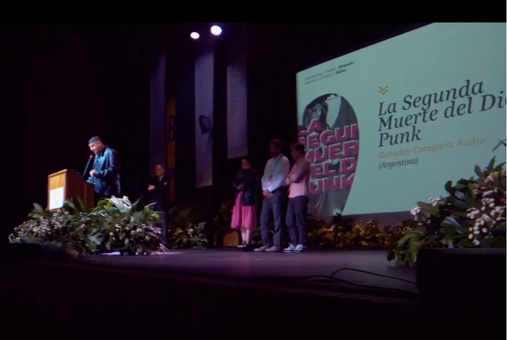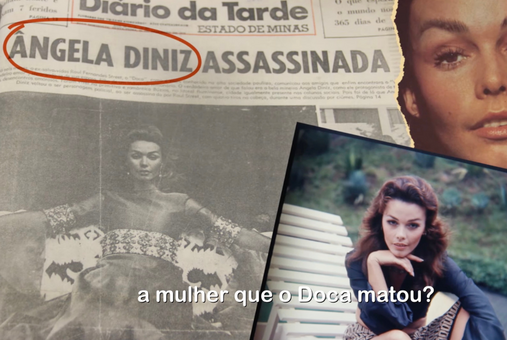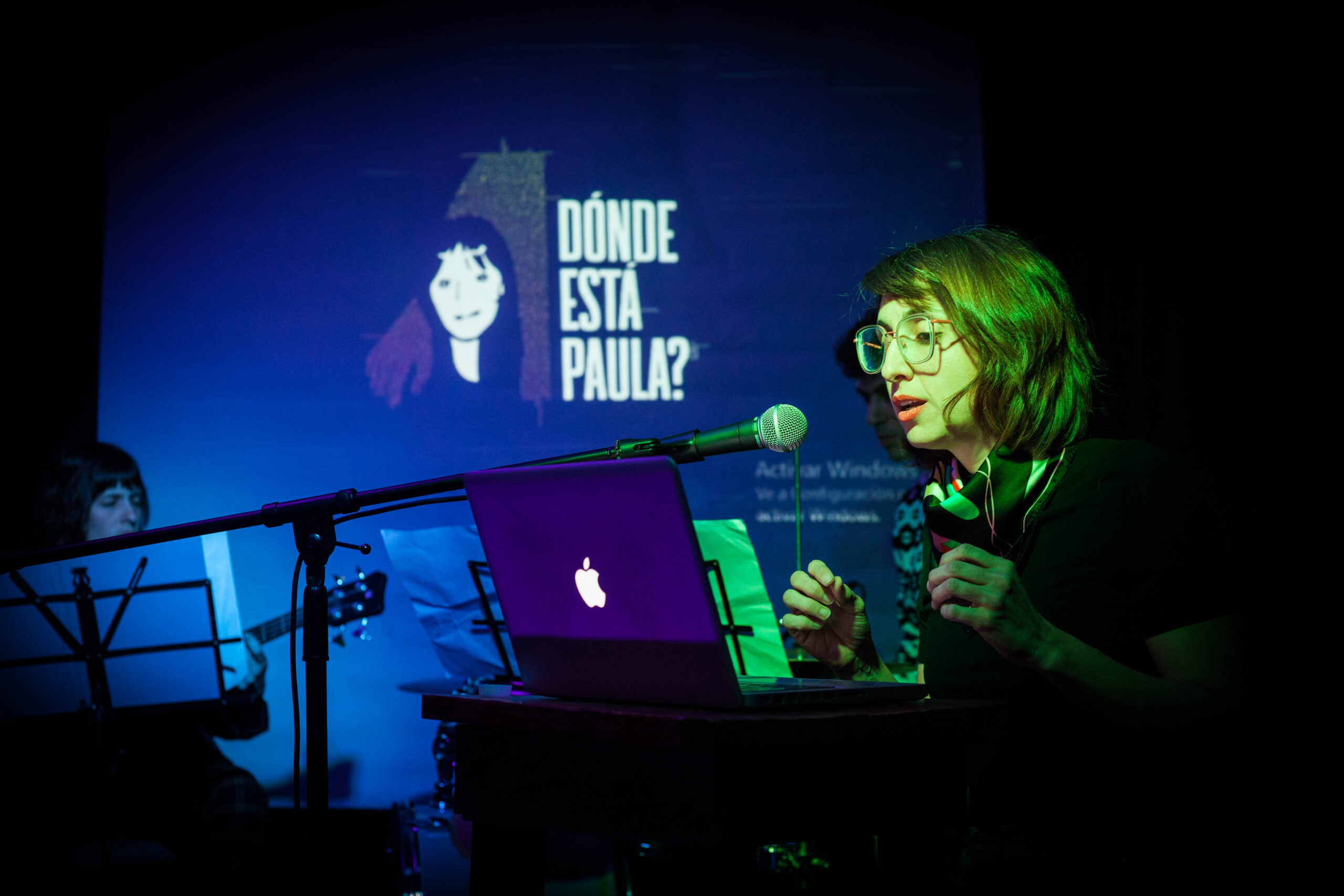For its 2022 edition, the Gabo Award — a prize given by the foundation of the same name to the best of Ibero-American journalism — decided to include Audio as a new category. They did so after receiving, in previous editions, hundreds of applications of sound journalism projects, especially in podcast format.
The Governing Council of the award sought to respond to the evolution of journalism in this format, which, it recognized, is expanding at great speed as a result of the so-called "era of audification" in the media.
The first winning entry in this category was "La Segunda Muerte del Dios Punk [The second death of the punk god]," a true crime podcast by Nicolás Maggi, a Rosario, Argentina-based journalist. The podcast is about Javier Messina, a traveling musician who took his own life after being "canceled" on social media, following an accusation of a crime he did not commit.
Podcasts like Maggi's about stories that examine real-life crimes are achieving great penetration among audiences in Latin America and around the world. The true crime genre, which has been popular in film and TV for several decades, has found in podcasts an ideal platform with which to reach new audiences. However, journalists still face great challenges for its production, distribution and monetization.

The first winner of the Gabo Award in Audio was the true crime podcast "La Segunda Muerte del Dios Punk", by Argentine journalist Nicolás Maggi. (Photo: Screenshot of Fundación Gabo on YouTube)
"True crime podcasts allow us journalists who are used to doing narrative journalism, chronicles, to combine sound, radio and narrative journalism," Flavia Campeis, journalist, Gabo Foundation fellow and creator of podcasts, told LatAm Journalism Review (LJR). “A podcast gives us many tools to be able to tell stories in a deeper, more detailed way. To be able to explain to the audience how we carried out an investigation.”
The podcast language allows journalists to thoroughly explore story details, which would be complicated to do in other formats. Given that it’s a format for personal consumption and allows us to hear human stories, sometimes in the voice of the victims themselves or their relatives, it creates empathy with listeners in a more organic way. Both the details and empathy are key elements when telling true crime stories.
"The podcast has a very intimate consumption format. You listen with headphones, by yourself, so you have to try to establish that complicity and talk to the other person taking care of everything, the tone of the voice, the way you tell the story…," Maggi told LJR. "True crime is today a great vehicle to make our stories reach more people and to touch them."
Maggi produced "La Segunda Muerte del Dios Punk" with Radio Universidad from the Universidad Nacional de Rosario (UNR) as a project to obtain his Communication degree, after more than ten years of professional experience in both radio and print media.
The podcast was uploaded to the Erre Podcast platform, a Rosario-based production company coordinated by Martín Parodi, Maggi's mentor at UNR, which helped its distribution and subsequent impact. The podcast has amassed more than 130 thousand listens on Spotify since posting the first of nine episodes, in October 2021. This has allowed the story of a local musician to go beyond and reach a much wider audience.
A similar case was "¿Dónde Está Paula? [Where is Paula?]", a true crime podcast produced and narrated by Campeis that tells the story of the disappearance of Paula Perassi, a woman from San Lorenzo, Argentina, who was last seen in September 2011, while pregnant. The first episode premiered in September 2021. So far, the series has accrued more than 13 thousand plays on Spotify alone.
"The point is that it can reach a larger audience. [The podcast] allows us to go beyond and tell a story that happened in a very specific place, in a small town in Argentina, and for it to reach many places. The podcast has been listened to in more than 40 countries," she said.
Like Campais and Maggi, more and more Latin American journalists are discovering that the global reach of a podcast can be useful in telling stories about global issues based on local stories.
“I think of success as creating sensitive, in-depth stories that have some sort of larger meaning. To be successful in that sense, you need to exhaustively interview as many people as possible, read through court documents, carefully plan out what you’re going to say and then produce content that tells the story carefully and thoroughly,” said Robert Quigley, a professor in the School of Journalism and Media at the Moody College of Communications at the University of Texas at Austin, where he teaches the class True Crime Podcasts.
A celebrated example of the former is "Praia dos Ossos [Bone beach]," the first original non-fiction series from Brazilian podcast production company Radio Novelo, which has surpassed three million downloads since its launch in 2020.
Through the story of the 1976 murder of Brazilian socialite Angela Diniz at the hands of her boyfriend, the series explores what happens when a flawed justice system intersects with a society's structural machismo.
"We don't really talk a lot about the crime itself. What we talk about is the repercussions of the crime, the way it was portrayed by the media, by the justice system and by her boyfriend," Branca Vianna, "Praia dos Ossos" creator and host, told LJR.
With audiences fed up with today's news saturation, journalists have had to find new ways to capture people's interest.
For Maggi, narrative nonfiction podcasts are a good tool to bring the public back to journalism, thanks to the introduction of elements from other cultural industries, such as cinema, literature and music.

"Praia dos Ossos" was Radio Novelo's first original non-fiction podcast, which has surpassed three million downloads since its launch in 2020. (Photo: Screenshot of Radio Novelo on YouTube)
"The [true crime] genre is in itself a good vehicle to reach audiences because it is a format that people already know and want to consume," Maggi said. “I personally am quite in favor of this mix between journalism and products that seem more linked to entertainment, because it seems to me a very interesting way to undo a divorce that has occurred between audiences and journalists.”
These narrative elements are part of what podcast creators call sound design, which consists of harmoniously combining various sound elements to achieve an immersive sound experience. It is precisely sound design that differentiates podcasts from other forms of audio journalism, such as radio.
“It's one of the most difficult things and it's one of the areas that we have the most difficulty in finding people who know how to do it,” Vianna said. “It's incredibly important. It sets the mood. Maybe in parts where you have to be very explanatory, sound design helps with that. It has to be very subtle, you know, it can't be in your face.”
According to Maggi, the sound design of a true crime podcast should generate sufficient empathy with the listener to the point of moving him or her and motivating reflection, with an appropriate tone of voice, testimonies in the voice of the victims or people close to them, music and even a recreation of events with sound effects.
"Deep down, I think most journalists want to move the audience, to make them think, to somehow touch their intimate emotional fibers by and through a well-told story," he said. “All of that can be achieved through products that are built in a way that looks like entertainment, but at their core, they surreptitiously practice deep, journalistic content.”
For Maggi as well as Campeis and Vianna, reenactments and dramatizations are resources that can be used in journalistic podcasts, as long as there is transparency and the listener is clear about which parts of the story are original sounds and which are recreated for purposes of ambience.
"Where's Paula?" went even further. The podcast featured actors playing text conversations by Paula Perassi that were key to understanding the story.
"These are chats that for the first time are told in a journalistic way. Since the chats were written and we don't have Paula's voice, what we did was to use actors, of course making it clear in the podcast itself that the chats were going to be acted," Campeis said.
For Vianna, the only way to learn to create a compelling and engaging sound design is to listen to as many narrative podcasts as possible, dissect and analyze them.
“Just listen to the best podcasts that are like the one you want to do and do some reverse engineering,” Vianna said. “[Ask yourself] Why are they putting this sound here? Why do they have music here and not there? Why is this not music? Why is this just a little sound? Should you use fake sounds or not?”
However, while entertainment elements help make podcasts more immersive and enjoyable for the listener, care must be taken not to fall into sensationalism or cross the boundaries of journalism, according to Quigley.
"We do have to think of how to create compelling content, but I think that’s different than entertaining content. We must be careful to not be sensational in the name of entertainment,” Quigley said. “Not only should creators stop thinking of crime as entertainment, but listeners should be more discerning in their media diet and demand better from creators.”
To follow journalistic standards when creating a true crime podcast also includes taking care of sources and evaluating whether victims or their families should be part of the production. Although having the voices of the protagonists or people close to them helps to create a more convincing picture of the characters, sometimes this can make them relive traumatic events involved in a crime.
Following the success of "Praia dos Ossos", Radio Novelo launched the podcast "Crime e Castigo [Crime and punishment]," in which each episode addresses a real-life crime in the voice of its protagonists or people close to them. Vianna, who is also behind this podcast, said that one must have enough sensitivity when approaching these sources and handling the material.
“You have to think that you're talking to people who have gone through incredibly traumatic events. It's not fair to re-traumatize anyone,” Vianna said. “You're usually talking to people who are not public people. They're not used to giving interviews. [...] As a journalist, if you're talking just to normal people you really need to think about that, especially if there's a crime involved.”
For Quigley, the fact that true crime investigative journalism podcasts do so well also has to do with the skills that journalists have when covering crime-related topics. And that's a competitive advantage over other podcast creators.
“Journalists have always reported on crime stories, so they know how to get records, they understand the terminology and they know how to talk sensitively to sources. I think the thoroughness that journalists use when approaching true crime helps them stand out in a crowded genre,” he said.
The first income that "La Segunda Muerte del Dios Punk" received was the economic reward that comes with the Gabo Award. Before that, the podcast had an impact, but it had not generated any money.
This is the sustainability scenario faced by most independent creators of non-fiction journalistic podcasts, who have only a few options to monetize their creations and must exercise long-term endurance work.

Flavia Campeis, creator and host of "¿Dónde Está Paula?", said her team is seeking funding to produce the second season of the podcast. (Photo: Courtesy)
“Making a long-form true crime podcast can be very expensive. You may need to put a reporter on a story for nearly a year. You might have to pay for travel…One of the best ways to recoup that cost is if you can sell advertisements. Advertisements are tough to sell for limited series podcasts,” Quigley said. “Podcasters can make a lot of money off of their work, but you need to be in this for the long haul. You have to be aggressive in finding new ways to monetize your work.”
The podcast is a relatively new format, with less than 20 years of existence, so it is still difficult for investors and sponsors to understand it and, therefore, they are wary if the product is not backed by a media or digital audio platform.
Several news outlets have ventured into the creation of podcasts, but most have limited themselves to the production of "dailies" (news of the day), which are simpler, faster and cheaper to produce than narrative non-fiction podcasts, which can take several months to create.
"[In Argentina] There were several large media companies that wanted to have their own podcasts, but they didn’t offer any incentives, they didn’t train journalists, nor did they offer extra payment for doing it, so it all ends up gobbled up in a way by the grind of daily tasks," Maggi said. "Then, what’s the problem? That they don't have enough patience to stick with the process until it pays off, that they're breathing down your neck, looking at the metrics and asking you 'why hasn't that money invested come back?'"
"La Segunda Muerte del Dios Punk" was produced with its own funds and with technical resources from Radio Universidad of the UNR. But based on the success of the podcast, Maggi and Erre Podcast are working on a second season in co-production with Posta, one of the most important podcast production houses in Argentina. The second installment will be available by May 2023, Maggi said.
"We’ll see about the possibility of commercializing the podcast through some platform. We are discussing that at the moment," he said. "We are trying to diversify, to send projects to the largest platforms, say Spotify, Amazon... We also want to explore the option of conversion to audiovisual material."
Even when a podcast is placed on a global platform, that does not guarantee revenue generation for the creator unless the platform acquires the podcast on an exclusive basis. Spotify, for example, pays an average of $0.003 per play, depending on factors such as the creator's country, the number of followers and the podcast’s reach. Therefore, monetization through that route is virtually nonexistent for most independent creators.
"[On Spotify] You don't monetize as you do, for example, on YouTube or other platforms. On podcast platforms it is only posted for free. And, well, yes, it’s interesting for it to reach a very large and diverse audience. But I think this is still something to solve or to rethink so that we can have some monetization from the listens," said Campeis, whose team is currently seeking funds for the second season of "¿Dónde Está Paula", which they hope to have ready by mid-2023.
Other podcast creators opt for alternative methods of financing. There are monetization methods such as crowdfunding or donations. More and more creators are asking for support from their listeners through platforms such as Patreon or Buy Me a Coffee.
Radio Novelo has found an important source of funding in non-profit organizations. "Crime or Punishment" is produced with funding from the Betty and Jacob Lafer Institute and the Oak Foundation, which were interested in creating content related to human rights and criminal justice. Similarly, its podcast "Projeto Querino," about the history of Brazil from an Afrocentric point of view, was funded by organizations that work with racial issues.
“It's a different way of doing journalism and a very interesting way, also because [podcasting] is very new,” Vianna said. “This is also intriguing because there's still a lot to be done. There's still a lot of experimentation that's possible. It just makes it very interesting.”